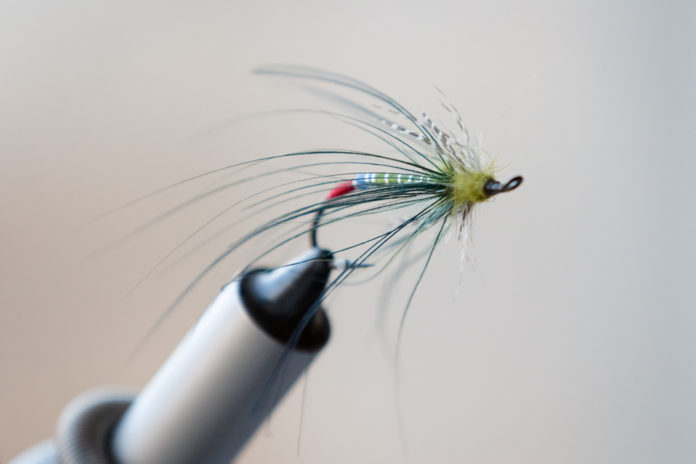The term deer hair when used in fly-fishing is usually associated with all types of hollow hair. This can pose a problem for the many fly tiers who assume that all hollow hair is the same, with the same characteristics. The hair from all cloven hoof animals such as Whitetail, Mule, Texas Whitetail Deer or Elk, Antelope and moose would to most, appear the same, but the similarities are restricted.
What is the difference between hairs
The difference is in the texture and thickness of any particular hair strand. This texture is mainly governed by geographical location of the animal concerend, and consequently the climatic influences on that environment. For example, animals from colder climates will carry heavier fur than those from more moderate temperatures.
With geography and climate being prime factors in the qualities and texture of hair, there are other important factors which also add to the equation. Time of year, the age of the animal, sex and location of hair on the anomal, i.e. hock, rump, mane, belly, etc. The shaft, grey section is hollow, the tip turns to a lighter color, for example, pa;e ginger or grey, the tip is not hollow. A significant aspect – the hair at this point will not compress.
Hair from Deer such as Whitetail and Norther White have a micro hair the extends out of the solid hair tip, called growth hair, making stacking of this hair very difficult.
Hair Texture
Hair textures can be put into three catagories:
- Fine: Characteristically will not flare making it idearl for downwing flies and tails
- Medium: Flares to a limited degree, excellent for caddis or Comparaduns.
- Course: Flares fully and best used for clipped body flies such as Muddlers and Bass Flies.
Each type examined
 Bull Elk: Medium texture, with long pale golden tips. 1 1/4″ – 2 1/2″ hair length. Great wingfly material for a Caddis, Size 12+
Bull Elk: Medium texture, with long pale golden tips. 1 1/4″ – 2 1/2″ hair length. Great wingfly material for a Caddis, Size 12+
Cow Elk: A course texture, with a steeply tapered tip, excellent spinning properties, and 3 times more durable than Deer hair, with a slightly heavier diameter than Deer, 1 1/2″ – 2 1/2″
Elk Hock is short, stiff hair, ideal for smaller caddis, upwing patterns and tailing material. 1/2″ – 1 1/4″
 Yearling Elk: The texture and length of this hair makes it perfect for tying attractors such as Humpies, being an immature hair, due to the age of the animal, only after its second winter is it considered fully mature. Its main characteristic is that it is about half the diameter of a full Cow Elk. It has well defined tips and decent spinning qualities. Because of the well defined tips, it enables a tyer to tie a great range of hair wing flies from sizes 8 – 24. 1 1/2″ – 2 1/2 ”
Yearling Elk: The texture and length of this hair makes it perfect for tying attractors such as Humpies, being an immature hair, due to the age of the animal, only after its second winter is it considered fully mature. Its main characteristic is that it is about half the diameter of a full Cow Elk. It has well defined tips and decent spinning qualities. Because of the well defined tips, it enables a tyer to tie a great range of hair wing flies from sizes 8 – 24. 1 1/2″ – 2 1/2 ”
 Antelope: Ultimate spinning hair. The best flaring characteristics. This hair can be brittle if not tanned and dyed properly. It is the most buoyant of all hollow hairs and length can vary between 1″ and 2 1/2 ” Due to the rough terrain this animal inhibits the tip hair is usually broken when harvested and is not recommended for stacking.
Antelope: Ultimate spinning hair. The best flaring characteristics. This hair can be brittle if not tanned and dyed properly. It is the most buoyant of all hollow hairs and length can vary between 1″ and 2 1/2 ” Due to the rough terrain this animal inhibits the tip hair is usually broken when harvested and is not recommended for stacking.
 Coastal Deer: Medium texture with hair between 1/4″ and 1 “. This hair has well defined barred tips. It carries no mocro growth so stacking is very easy. The smaller diameter of this hair allows flies in the 18-22 range to be tied. Because of the medium texture, it also makes it great for small clipped body flies such as Irresistables.
Coastal Deer: Medium texture with hair between 1/4″ and 1 “. This hair has well defined barred tips. It carries no mocro growth so stacking is very easy. The smaller diameter of this hair allows flies in the 18-22 range to be tied. Because of the medium texture, it also makes it great for small clipped body flies such as Irresistables.
 Moose Mane: This can go from 3 1/2 ” to 8″ in length. Natural color is black and white combined. Its soft but very durable. It can be woven or wrapped on the shank of a hook for bodies in patterns like a mosquito. This hair comes in two categories, body hair of medium texture, a stiff fibre in one color – usually black. Great for tails on Humpies. A little finer than Elk Hock, it can extend to 3″ in length, it will spin but requires considerable thread pressure, and is ideal where durability is a prime consideration.
Moose Mane: This can go from 3 1/2 ” to 8″ in length. Natural color is black and white combined. Its soft but very durable. It can be woven or wrapped on the shank of a hook for bodies in patterns like a mosquito. This hair comes in two categories, body hair of medium texture, a stiff fibre in one color – usually black. Great for tails on Humpies. A little finer than Elk Hock, it can extend to 3″ in length, it will spin but requires considerable thread pressure, and is ideal where durability is a prime consideration.
 Calf Body: This hair is used more and more every day by tiers. Straight, it varies from 3/4″ – 1 3/4″. It stacks very nicely for patterns such as Wulffs down to size 18 or Bomber Salmon patterns.
Calf Body: This hair is used more and more every day by tiers. Straight, it varies from 3/4″ – 1 3/4″. It stacks very nicely for patterns such as Wulffs down to size 18 or Bomber Salmon patterns.
Texas Whitetail: Coming from a subtropical climate the hair although up to 2″ in length is very thin, not needing bulk to keep the animal warm. This hair is ideal for tails and downwings (Caddis, etc.). The hair is generally only hollow in the lower 1/3, and strongly variegated.
If you want to learn more about fly-fishing or you just want to become a more accomplished angler check out our latest articles in the Fishing Category.










